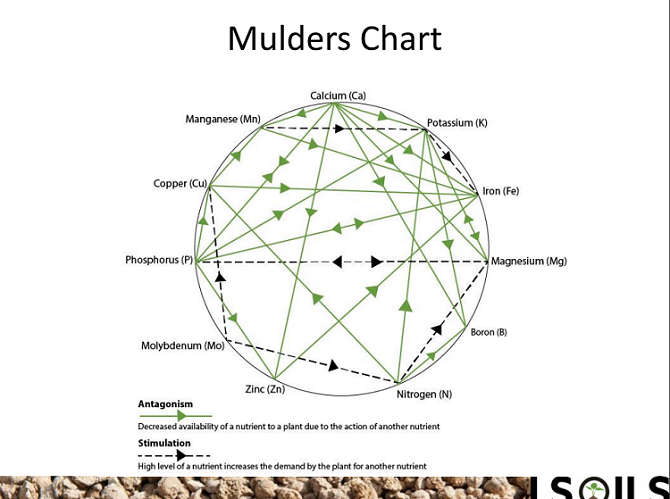Inverness Soil & Nutrient Network: 2nd meeting – Understanding nutrient interactions
29 March 2020The Inverness Soil & Nutrient Network met for the second time in early March for a focus on ‘Understanding nutrient interactions’.
Mark Tripney, ISoils Ltd, returned as guest speaker for this event. The aim of the meeting was to get the assembled farmers to look at soil and manure analysis more thoroughly. Basic soil analysis over the last 50 years has
oversimplified what is perceived as soil health and led growers to think only in terms of NPK. Each of the three groups was provided with analysis and asked to comment on what they found and possible solutions. Two groups had soil analysis of varying detail with the third commenting on slurry and digestate analysis.
The nutrient discussions focused initially on what they always have and not some of the other nutrients in the reports. A guide range or index was preferred as this is what they have been used to. Introducing the concept of Cation Exchange Capacity (CEC) and the importance of Ca, Mg, K & Na levels within a base saturation led to broader observations of these nutrients and the balance between them. Understanding that all 4 of these can affect soil pH and that soil may have an optimum pH but still be short in Calcium and therefore be affecting soil structure and plant health.
The concept of soil, plant and animal health antagonisms was thoroughly explored with the aid of Mulders Chart. Elements such as P, K, Mg, Fe, Cu, Zn were looked at within these samples to see which ones may be limiting.
Slurry and digestate samples were compared on their suitability for crop application and what effects some of the levels may have in achieving a crop demand and soil balance. It was observed that the two slurries varied not only in terms of the dry matter but also levels of potash (K) and calcium (Ca) in particular, these illustrated the importance of knowing a farms slurry analysis and how it can vary depending on what the animals are bedded on and fed. It was generally accepted that a broad spectrum soil analysis should be carried out and that analysis of any organic matter applied to land should be looked at in tandem with it to form an appropriate nutrient management plan.
Mark’s presentation slides are available to download from the links below. We took the time to catch up with Mark after the meeting to discuss the key points of discussion during the event. The podcast is available to listen to below.
- Soil & Manure Nutrients – Presentation slides by Mark Tripney for Inverness Soil & Nutrient Network (March 2020)
- Presentations slides used by Mark Tripney during the 2nd meeting of the Inverness Soil & Nutrient Network, March 2020
- Topics: Soils and Crops and Soils
- Valuing Your Soils – Practical Guidance for Scottish Farmers
- This brochure includes useful information about Scotland's agricultural soils and practical advice outlining the upfront financial savings and business benefits of better soil management and the efficient use of resources. Action and problem-specific 'field-sheets' are designed for busy farmers with limited time for reading.
- Topics: Climate Change, Soils, Water Management and Crops and Soils
- Technical Note (TN714): Liming Materials and Recommendations
- This technical note examines soil pH, choosing liming materials and lime recommendations for different soils.
- Technical Note (TN710): Soil Analysis in the West Highlands and Islands
- This technical note examines the analysis of the wide range of soils found in the West Highlands and Islands.
Sign up to the FAS newsletter
Receive updates on news, events and publications from Scotland’s Farm Advisory Service

